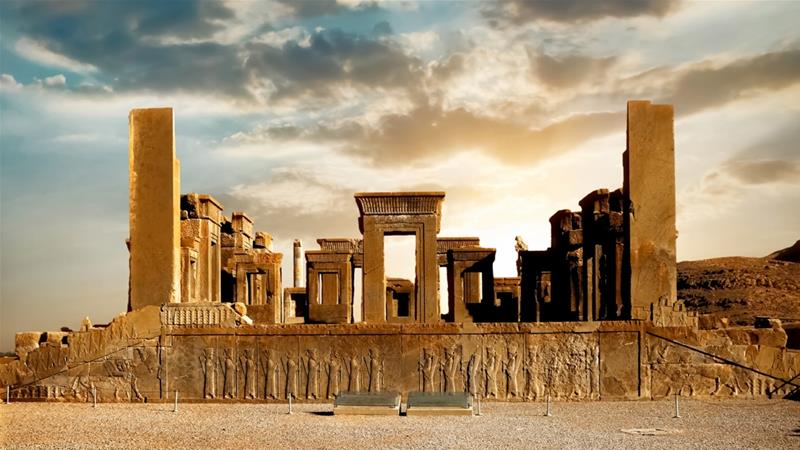By Akanimo Sampson
US President Donald Trump appears to be alone on his administration’s plot to hit Iranian cultural sites. Persuaded by the international prohibitions on such attacks, The Pentagon on Monday distanced itself from the Trump assertions that he will bomb Iranian cultural sites.
The Pentagon is, however, the headquarters building of the United States Department of Defence as a symbol of the U.S. military, the phrase The Pentagon is also often used as a metonym for the Department of Defence and its leadership.
Located in Arlington County, Virginia, across the Potomac River from Washington, D.C., the building, according to Wikipedia, was designed by American architect George Bergstrom and built by contractor John McShain. The ground was broken on September 11, 1941, and the building was dedicated on January 15, 1943.
The Times of Israel, a Jerusalem-based online newspaper that documents developments in Israel, the Middle East and around the Jewish world, quotes Defence Secretary Mark Esper as saying the US will “follow the laws of armed conflict.” When asked if that ruled out targeting cultural sites, Esper said pointedly, “That’s the laws of armed conflict.”
The split between the seeming pro-war President Trump and The Pentagon chief is coming amid heightened tensions with Tehran following a US drone strike that killed Gen. Qassem Soleimani, the head of Iran’s elite Quds Force. Trump had twice warned that he will hit Iranian cultural sites if Tehran retaliates against the US.
But, Esper’s public comments tend to reflect the private concerns of other defence and military officials, who cited legal prohibitions on attacks on civilian, cultural and religious sites, except under certain, “threatening circumstances.’’
In a tweet on Saturday, Trump raised the prospect of hitting cultural sites when he tweeted, “we have targeted 52 Iranian sites (representing the 52 American hostages taken by Iran many years ago), some at a very high level and important to Iran and Iranian culture, and those targets, and Iran itself, WILL BE HIT VERY FAST AND VERY HARD.”
According to The Times of Israel, Trump’s Twitter message caught administration officials off-guard and prompted an immediate outcry from legal scholars, national security experts and Democratic lawmakers. But the president is standing by his threat.
“They’re allowed to kill our people. They’re allowed to torture and maim our people. They’re allowed to use roadside bombs and blow up our people,” Trump reportedly told reporters who were traveling with him on Air Force One. “And we’re not allowed to touch their cultural sites? It doesn’t work that way.”
But, by international law, it does.
The 1954 Hague Convention specifically says nations must “take all possible steps” to protect cultural property and shall refrain “from any act of hostility, directed against such property.” It also says nations must not use cultural sites for any threatening purposes that would make such locations a military target.
The Pentagon has long had a list of potential targets both inside Iran as well as those associated with Iran throughout the Middle East. Those targets and war plans are routinely updated, including during the recent uptick in hostilities.
Officials won’t discuss the list, but it is certain to include an array of Iranian military sites and capabilities, including missile, air defense and command and control locations.
Any targets will go through a lengthy vetting process within the military and the Pentagon to determine that they are legal, appropriate and proportionate to any Iranian action. Only after that process is complete would a list of potential sites go before the president for approval.
Outside the Pentagon, Trump’s threats were met with condemnation.
“It shows that he is somewhat deranged about this,” said Sen. Tim Kaine, D-Va. “The pledge to attack cultural sites, likely, is a violation of international law.”
Kaine said that all Trump is doing “is escalating tensions and he seems to believe, ‘I can strike you, but you can’t strike me.’ That’s not the way the world works.” He added that Trump needs to confer with Congress.
The threats also drew reactions from the Metropolitan Museum of Art in New York.
“The targeting of sites of global cultural heritage is abhorrent to the collective values of our society,” museum leaders said in a statement. “At this challenging time, we must remind ourselves of the global importance of protecting cultural sites – the objects and places by which individuals, communities, and nations connect to their history and heritage.
Ahead of Esper’s comments, other administration officials tried to make clear that the US will follow the law without directly contradicting the president. Secretary of State Mike Pompeo on Sunday said that any US military strikes inside Iran will be legal.
“We’ll behave inside the system,” Pompeo said. “We always have and we always will.”

